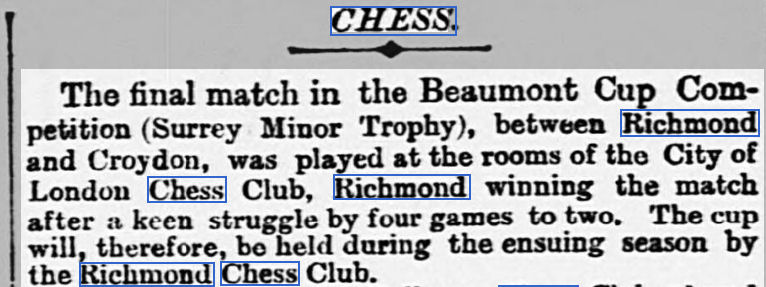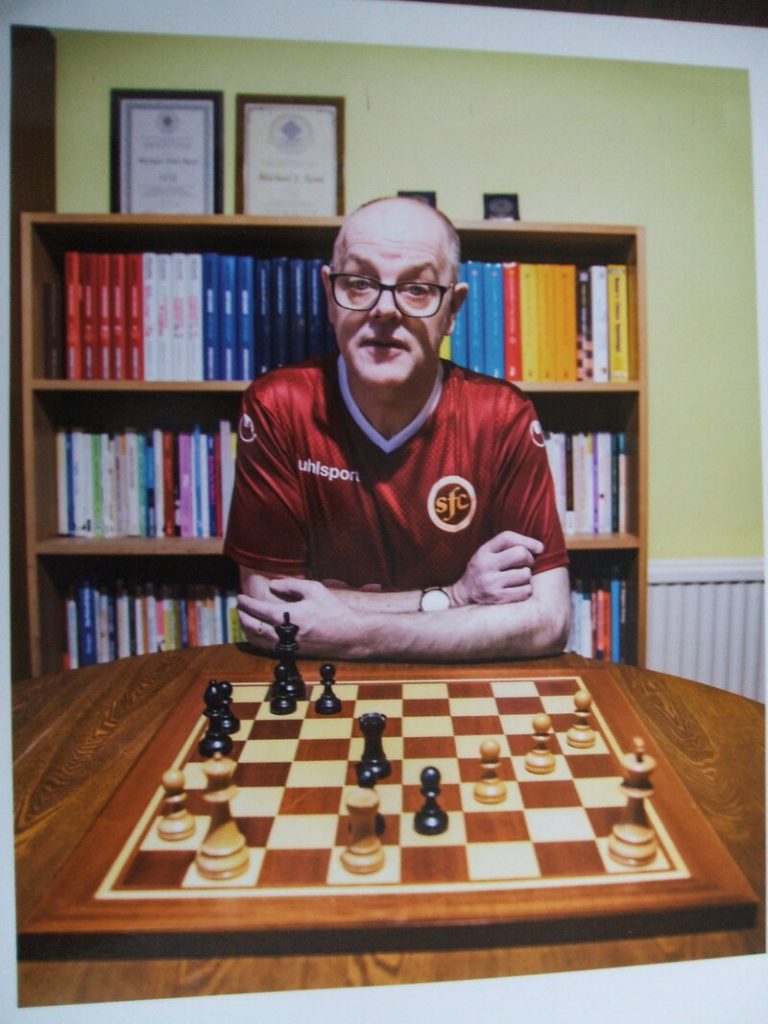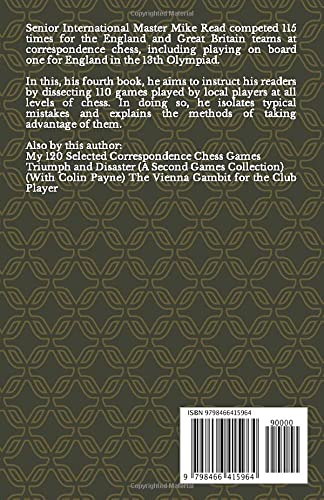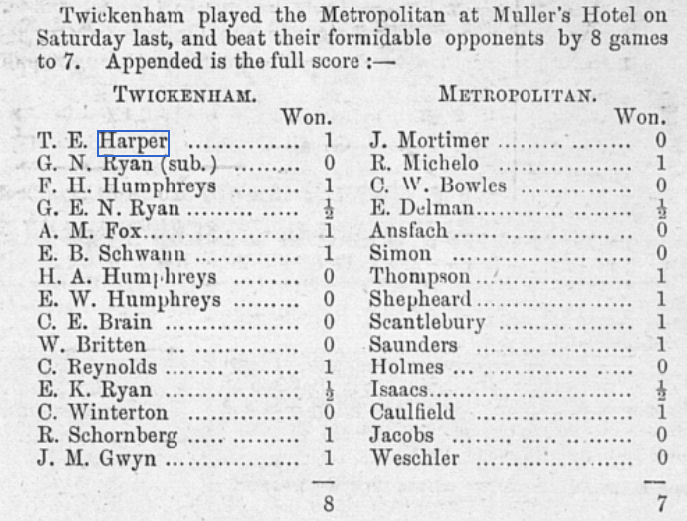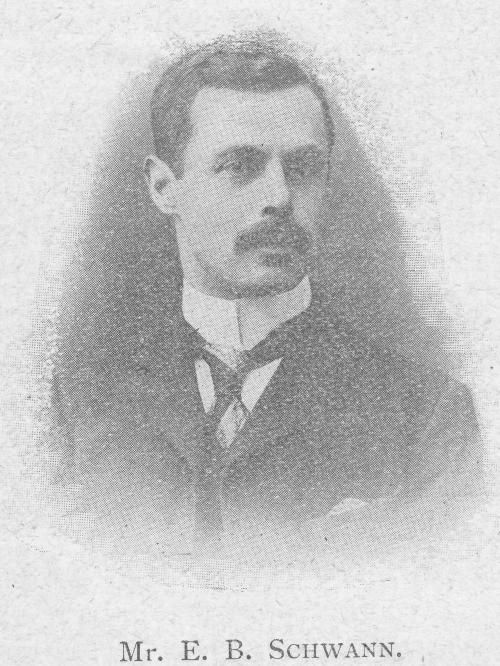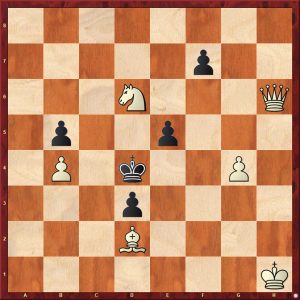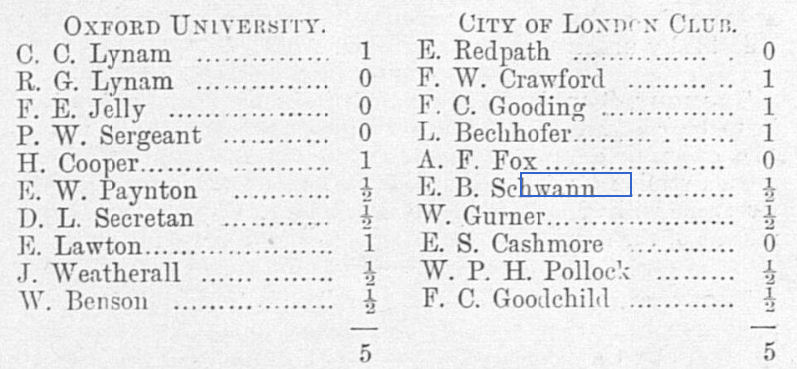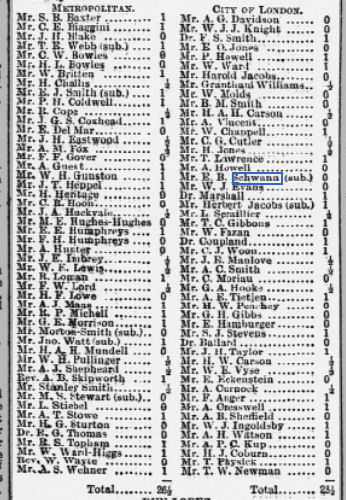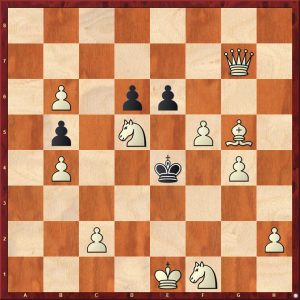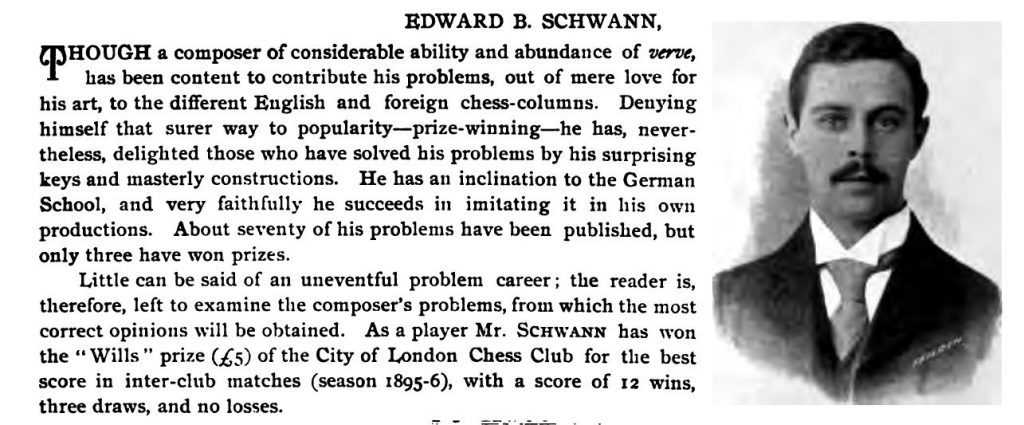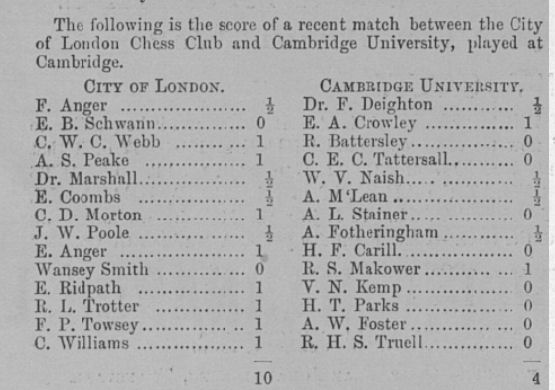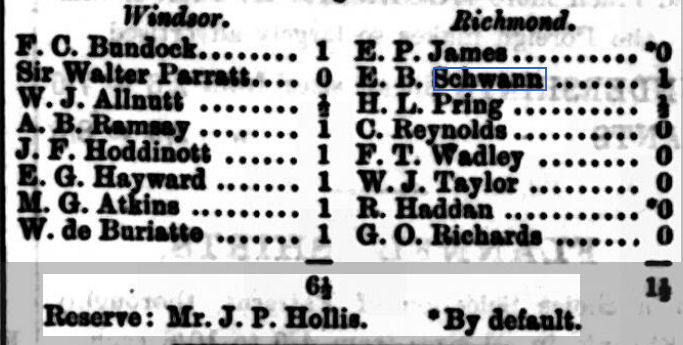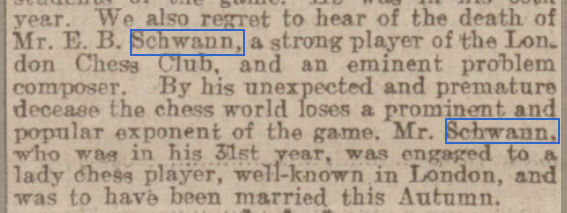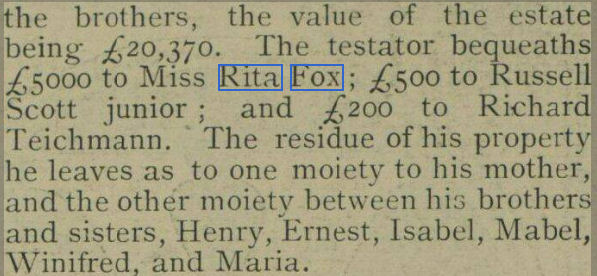
From the publishers’ blurb:
“GM Jan Werle is a professional chess trainer, coach and author. In 2008 he became EU Champion in Liverpool and reached his peak rating of 2607. Afterwards he finished his law studies, obtaining Master’s degrees in Civil and Commercial Law, and embarked on a career as a lawyer. However his main passion, chess prevailed, and led to a comeback. He gives chess lessons to pupils worldwide, individually and in groups. He enjoys teaching and helping his students and watching them improve. He combines teaching with playing in tournaments, keeping up his own level. Jan likes to meet new people and see new places and has been travelling to tournaments across the globe since an early age. He has played in all age categories in the World and European Championships finishing 3rd in the U-16 Championship in 2000 and 2nd in the U-18 in 2001. In 2004 he beat FIDE World Champion Rustam Kasimdzhanov and has won several strong international opens such as the Essent Open in Hogeveen in 2007, the Oslo Open and 8th place in the Gibraltar Masters in 2020, the strongest open in the world, with a score of 7/10 and a tournament performance of 2743. ”
Defence is a difficult subject to write about. What do we mean by defence, anyway? We have to defend if we have the worse position, but we also have to defend if our opponent is creating threats. If our opponent has made an unsound sacrifice for an attack, we might have to defend when in a winning position.
For these reasons there have been relatively few books written about this important aspect of chess, so it’s good to be able to welcome this new volume. Let’s take a look inside.
Chapter 1 doubles as the Introduction.
In this book I try to shed light on how to put up tenacious resistance, as well as why most defenders aren’t able to do so. There are so many books written about the attack and the initiative, not to mention opening books. But isn’t the hardest discipline in chess the defense of a weak position?
Technically speaking, one of the reasons why defense is such a difficult discipline, is that the attacker has several good moves at his disposal to choose from, whereas the defender is bound to pick one single move which enables him to ‘survive’.
Werle also discusses chess psychology, and, in general, sports psychology, subjects of particular interest to him, and with which he has personal experience.
There is an increasing understanding of the role psychology plays in chess, and, when your opponent is putting you under pressure, this is especially important. As you’ll see, this is discussed at length here.
Chapter 2 is again relatively short, looking at two forms of ‘inaccurate defence’: being too passive (and gradually getting crushed) and being too active in positions where you need to sit tight. It’s no coincidence that Werle’s examples of undue passivity come from older games: we know a lot more now about the virtues of active defence and the need to create counterplay, even at the cost of material.
Chapters 3, 4 and 5 constitute the heart of the book, each providing an in-depth look at defence in very different ways.
Chapter 3 offers The rise of defense in chess history, taking us all the way from Greco to Carlsen, with many instructive examples along the way. The author is particularly interesting when writing about Steinitz and Lasker, both of whom had much to say on the subject as well as demonstrating defensive skills in many of their games.
He then moves onto Botvinnik and Smyslov, both also giants of defensive play. I was taken by this example from a fairly well known Botvinnik (black v Liublinsky Moscow 1943/44) game.
Here, Botvinnik played what has now become a stock exchange sacrifice.
25… Rd4!?
Botvinnik gives this move an exclamation mark, citing the advantages of the repaired pawn chain and the passed pawn, as the closed nature of the position deprives the white Rooks of any activity. However, in the ensuing lines there occur many concrete ‘computerish’ breaks which gives the Rooks a (perhaps better than) level playing field compared to the minor pieces.
26. Ne2
Lyubinsky (sic) prefers to take the Rook with his Knight and to retain his Bishop. A questionable decision, since the Knight would have been well placed on the blockading square d3, according to Botvinnik.
After 26… Bc8 27. Bxd4 cxd4 28. Nc1! he would have kept a large advantage, but for the same reason after keeping the Bishop instead of the Knight on the board. In essence, White has to open the files on the queenside.
26… Bc8 27. Nxd4 cxd4 28. Bf2?
When Botvinnik mentions that his opponent is saddled with a dark squared Bishop (instead of the Knight) and thus completely without counterplay, Botvinnik missed several potential interesting and dynamic ideas to open the queenside files, assuming White was just obliged to await further developments.
White could have refuted this notion by, for example, 28. Bd2! with the idea of b3-b4. 28… c5 29. Rab1 f5 30. a3 Be6 31. Rb2! Now there is no way to stop the b3-b4 pawn break, when the files and ranks are opened, and the Rooks become ‘monsters’. 31… f4 32. b4! axb4 33. axxb4 cxb4 24. Rdb1 when White has a winning advantage.
Chapter 4, Emotions in Chess, looks at defence through the lens of sports psychology. Comparisons are made with other sports, notably tennis, with players such as McEnroe, Agassi and Federer discussed. We learn about debilitating emotions: anxiety, anger, relief and pride, how emotions might be triggered and how to cope with them.
Examples demonstrate how our emotions might affect how we play: particularly being too cautious or not sufficiently decisive.
Then Werle explains how we can control emotions by relaxation or a variety of cognitive techniques.
Any serious competitive player will find this chapter, concerning an increasingly important aspect of chess, very helpful.
Chapter 5 takes us back to the chessboard, looking at Defensive Strategies. Sometimes we can use prophylaxis: preventing our opponents from carrying out their plans. Sometimes we just have to wait to see how our opponents are going to improve their position. On other occasions, though, we need to be proactive, looking for counter-attacking moves which will turn the tide.
Back in Chapter 3, Werle discussed Korchnoi’s massive plus score with the black pieces against Tal to demonstrate what can happen when a brilliant attacker comes up against a brilliant defender. There are several examples scattered throughout the book.
Here is a striking example, from Moscow 1971.
In this position Korchnoi played:
16… Kh8!!
Fantastic prophylaxis against h4-h5! Black can take now on e5 as the discovered check on h7 is out of the question. Not good was 16… Rfd8?, as after 17. h5 Nf8 18. h6 g6 19. Qxc4 Black would have been left with weakened black squares around the King and an isolated c-pawn.
Werle goes on to demonstrate the remainder of the game, which Korchnoi won on move 40.
(Checking this with Stockfish 15, though, the engine claims that 16… Rfd8 17. h5 Nf8 18. h6 Ng6 19. hxg7 Bc6 is fine for Black.)
Alekhine was a pioneer of risk-taking in defence, as Werle demonstrates in this example (Lasker – Alekhine Moscow 1914).
13… O-O-O!!
This unexpected, brutal move must have come as a shock to Lasker. White might have expected something like 13… Ne5 instead. White keeps an advantage with 14. Qc3 protecting f3. Black faces real issues completing his development. Or 13… Qe6 for the sake of bringing the Bishop out. 14. Re1! Bxc5 Who tricks who? 15. Qxd7+! Apparently, White tricks Black. Either way, there follows a Knight fork on f6 or c5.
14. Qa4
As storm clouds gather above Black’s position, Alekhine finds a creative solution for the problem of his king’s position. He could have played 14… Kb8 here to defend the pawn on a7, but then the game wouldn’t last for long after White plays simple developing moves: Bf4, Rd1-d3-b3/a3.
14… Ne5
This move is not approved by the commentators, but nonetheless it achieves its intended effect in the game. The point is that Alekhine places his knight as actively as possible, directed towards the enemy’s king.
15. Kg2 Qe6
16. Qa7?!
And here is the mistake: White is seduced into taking the pawn. Annotators, starting with the players’ contemporary Siegbert Tarrasch, indicated that a much safer move was 16. Bf4 initiating a strong positional idea. 16… Kb7 17. Bxe5 – after taking the strong knight on e5 White will develop a quick attack against black’s King with Re1 (threatening Nd6+) – Re3-Rb3, meanwhile Black has issues developing his bishop on f8.
16… Qf5!!
The ‘standard’ 16… Qg6+ fails without a fight after 17. Bg5! White will prevent the King’s escape via d7 on the next move. 17… f6 18. Rad1 And there is not much to do against the mating threat on a8.
With this beautiful queen move, Alekhine is not only threatening to take on f3, but also at the same time vacating the escape route c8-d7-e6 for his King!
The game resulted in a draw by perpetual check a few moves later.
This extract (I’ve omitted another three diagrams) gives you some idea of the flavour of the annotations here.
Chapter 6 offers what is these days the almost obligatory quiz to test your defensive skills, with 22 questions where the defender has to make a critical decision.
All in all, this is an excellent book which will interest all serious competitive players. If you have an interest in sports psychology you may well consider it an essential read. The book is exceptionally well researched and the examples are well chosen, although, as they’re mostly taken from grandmaster practice you might consider them more suitable for stronger players. The book itself looks good. It’s illustrated with many photographs, some of only tangential relevance, and important sentences and quotes are highlighted in callout boxes.
My one problem – and this might not annoy you as it does me – is that, as with so many chess books, the proofreading is well below the standard I’d expect from books on other subjects. You can perhaps tell from some of the extracts above that the text isn’t always fluent and sometimes the meaning isn’t entirely clear at first reading. But beyond that there are many other minor issues: inconsistent spellings (Tal is Mikhail and Mihail on the same page), inconsistent use of capitalisation of names of chess pieces, even in the same sentence, and so on. I appreciate (in part from being on the other end at the moment) that this process takes time and costs money: perhaps omitting it is a necessary sacrifice to make books like this economically viable.
If you don’t find this an insurmountable problem, I’d recommend this book as a brave and original take on a complex and difficult aspect of chess.
Richard James, Twickenham 25th May 2022

Book Details :
- Softcover: 340 pages
- Publisher: Thinkers Publishing; 1st edition (11 Jan. 2022)
- Language: English
- ISBN-10:946420141X
- ISBN-13:978-9464201413
- Product Dimensions: 16.76 x 2.03 x 23.37 cm
Official web site of Thinkers Publishing


